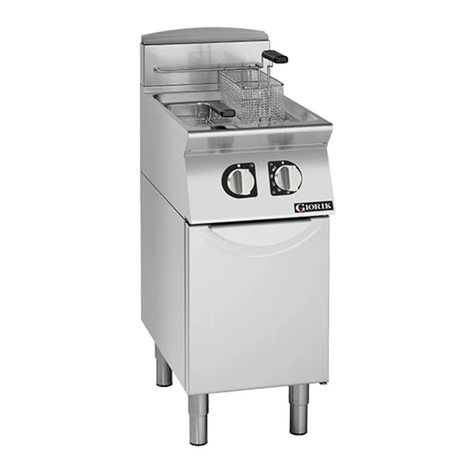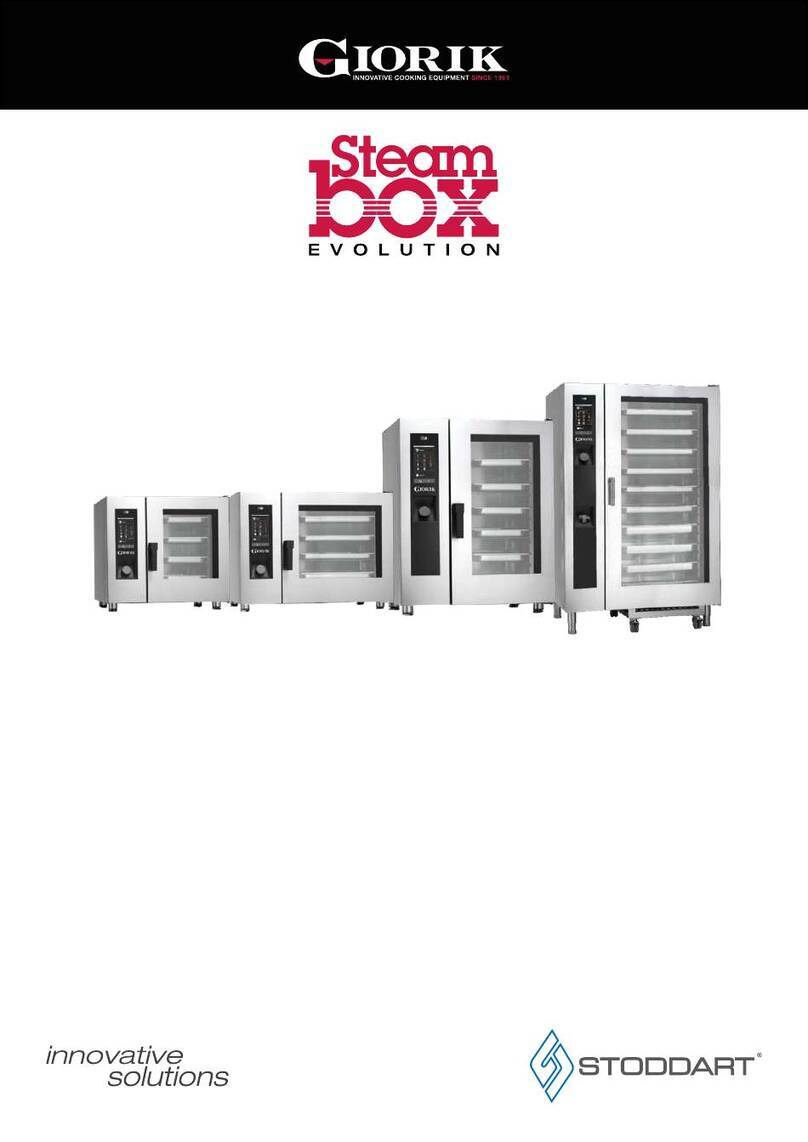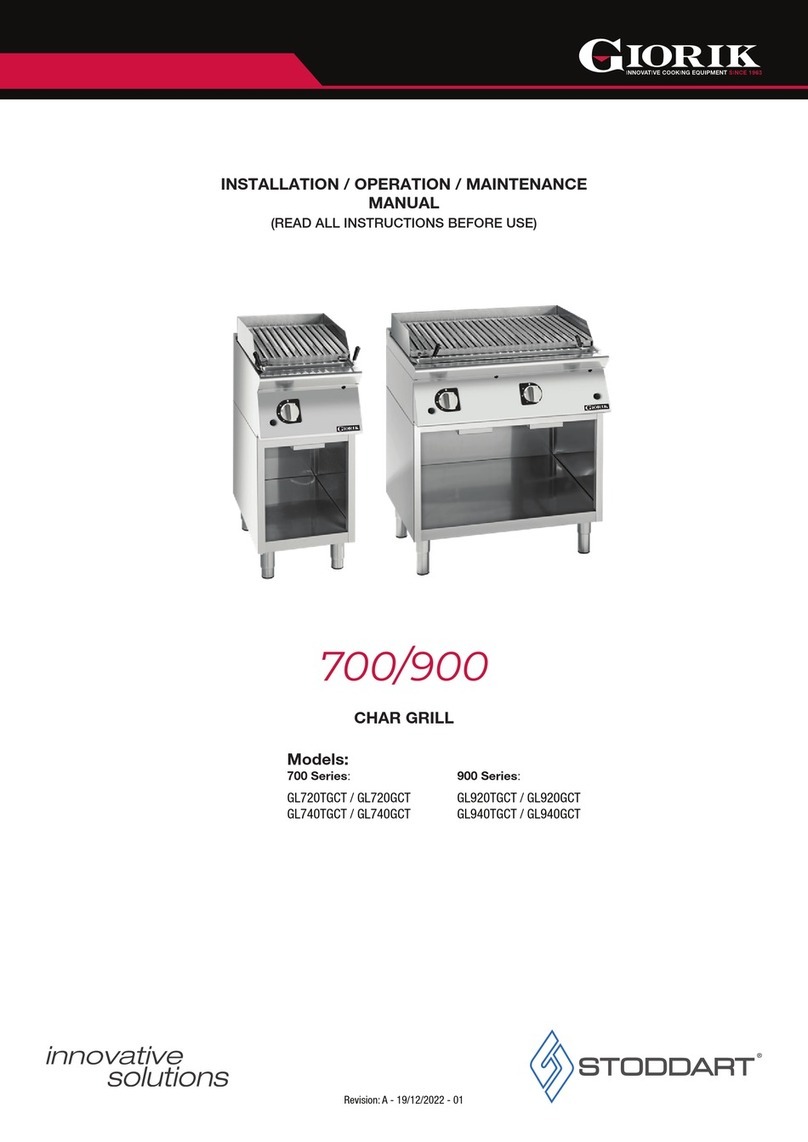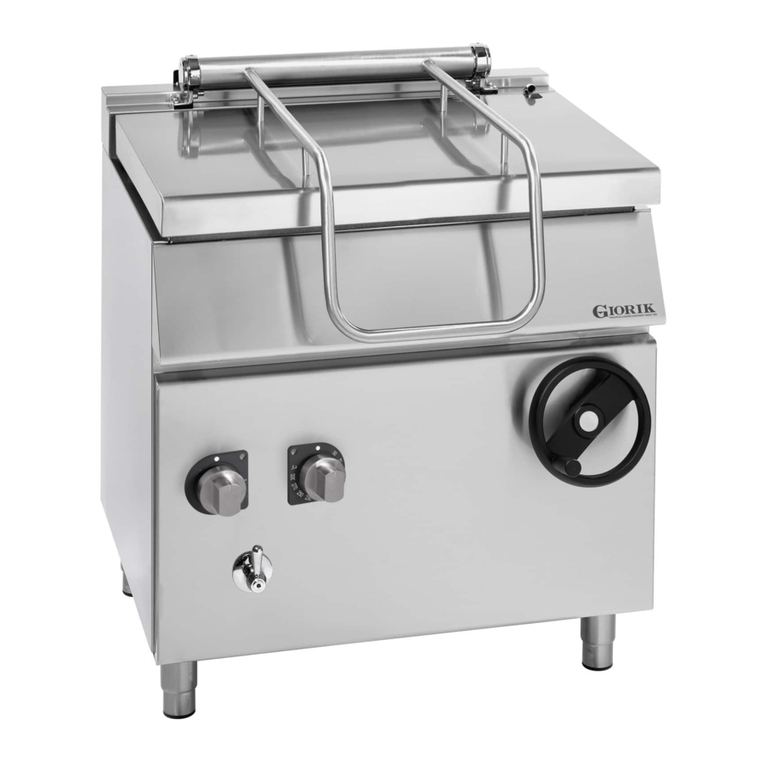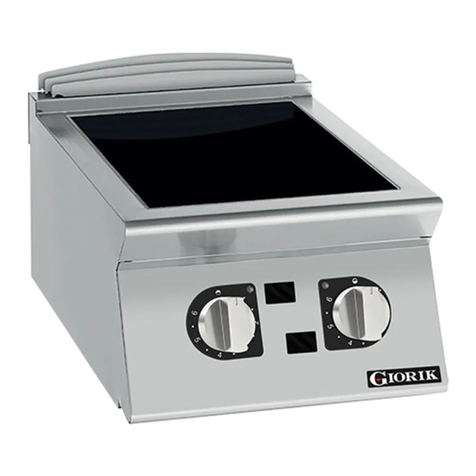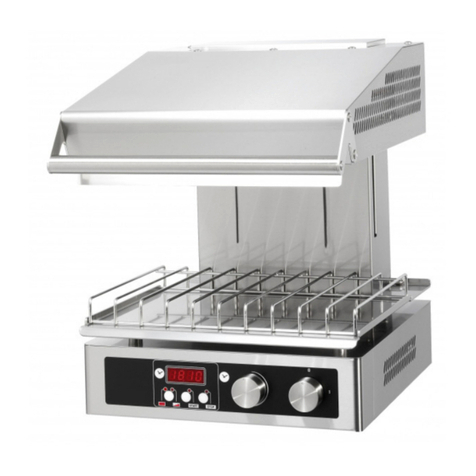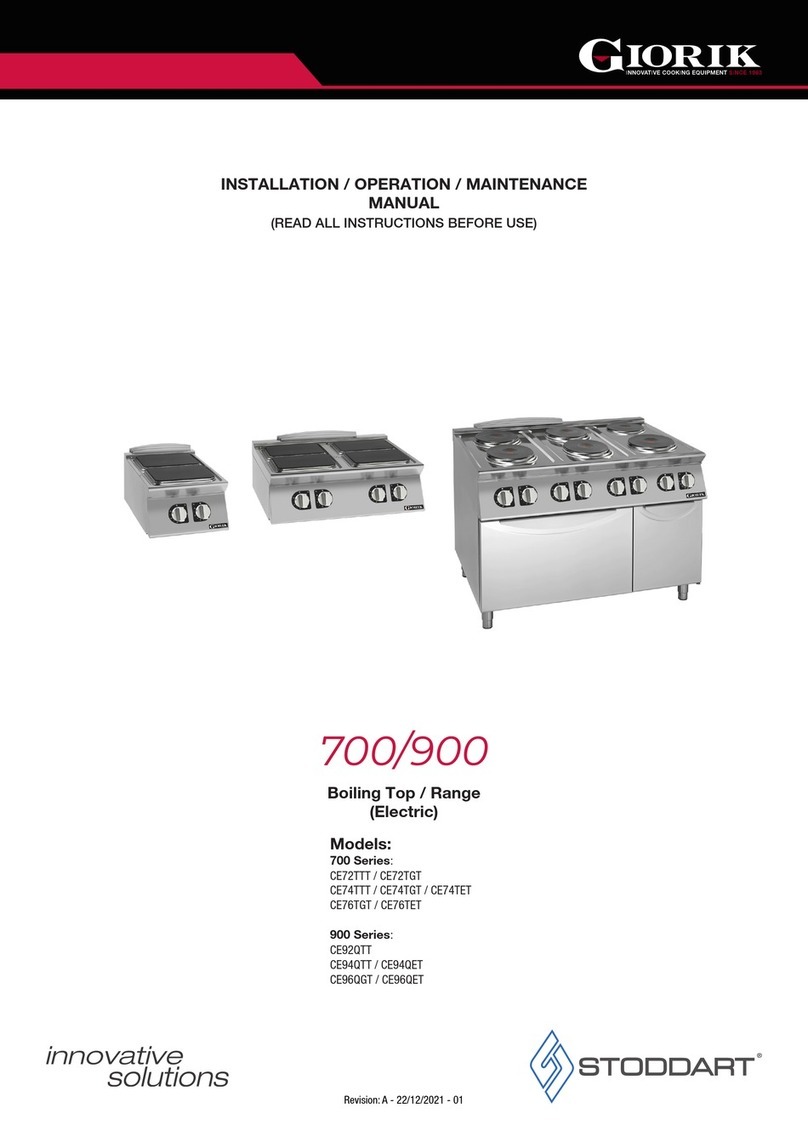
3
STEAM-BOX. installation, use and maintenance manual
1. Installation
1.1. General and safety warnings
Carefully read this manual before installing
and commissioning the oven, in that the text
gives important indications regarding the safe
installation, operating and maintenance of the
equipment.
Keep this manual in a safe and easily accessible
place for further consultation by the operators.
In case of transferring the oven, always attach
the manual; if necessary, a new copy must be
requested from the authorised dealer or directly
from the manufacturing company.
Once unpacked, ensure the oven is intact and
does not show signs of damage due to transport.
A damaged appliance must never be installed and
commissioned; if in doubt, immediately contact
the after-sales technical assistance or your own
dealer.
Installation, extraordinary maintenance and
repair operations on the equipment must only be
carried out by professionally qualied staff and by
following the manufacturer instructions.
The appliance has been designed to cook food
in closed premises and must only be used for
this purpose: any other different use must,
therefore, be avoided as considered improper and
dangerous.
The oven must only be used by staff adequately
trained for its use. To avoid the risk of accidents or
damages to the appliance, it is also fundamental
that staff regularly receive precise instructions
regarding safety.
The oven must not be used by persons with
reduced physical, sensorial or mental capacities
or by persons without experience and knowledge,
unless supervised or educated regarding the
operating of the appliance by a person responsible
for their safety.
Children must be supervised to assure they do not
play with the appliance or use it.
Pay attention to the hot parts of the external
surfaces of the equipment during functioning that,
in working conditions, may exceed 60°C.
In case of fault or bad functioning, the equipment
must be deactivated; in case of repair, contact
only an after-sales technical assistance centre
authorised by the manufacturer and request
original spare parts.
Do not position other heat sources like, for
example, fryers or hotplates, near the oven.
Do not deposit or use ammable substances near
the equipment.
In case of prolonged disuse of the appliance, both
the water and electric energy supply must be
shut-off.
Before commissioning the equipment, ensure
to have removed all packaging, being careful to
dispose of it in compliance with the Standard in
force.
Every amendment to oven installation that should
result necessary, must be approved and carried
out by authorised technical staff.
Amendments to the oven wiring are not admitted.
The non-compliance with the above warnings can
jeopardise the safety of the equipment and yours.




















